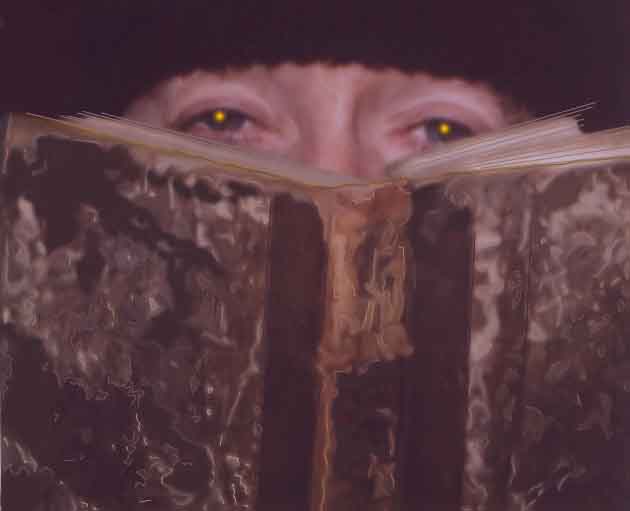









WAYNE BOUCHER
Art Gallery of Nova Scotia
[First published in the March 1985 issue of Vancouver's now defunct art magazine Vanguard, page 32.]
In an notebook on display Boucher writes "The common element is the shape?" If we take him at his word, Boucher's last decade of work can be seen as a long exercise in the absorption and filtering of art world influences through a formalist sensibility. From drawings of tools, which recall Jim Dine, to the (apparent) influences of Haligonian Ron Shuebrook, Boucher has worked through an ambivalence about the purposes of painting. Flamingo is a large mixed media work in which plastic lawn ornaments pay homage to what seems to be an emerging painted flamingo, as if Clement Greenberg's Avant Garde and Kitsch distinctions are being parodied. If this analysis cannot be accepted, then we are forced to take the flamingos at face value and concede the influence of Boucher's rural setting, where lawn ornaments are taken seriously. A confluence of the two approaches may be closer to the core of Boucher's thinking - the flamingo painting makes Boucher Nova Scotia's Julian Schnabel, our newest Jack Bush, or latest embodiment of New York cultural domination. As Struan Robertson, the Development officer of the Art Gallery of Nova Scotia, said in opening remarks at the Rothman's sponsored "American Accents" show earlier this year, "American art still leads the world!"
Perhaps I'm being too hard on the Art Gallery of Nova Scotia. I certainly don't want to suggest that either the AGNS or Boucher should shoulder the complete burden of responsibility for American cultural domination: it's everyone's problem. It would also be malicious to characterize Boucher's work as the ephemera of foreign culture. The struggles he has been engaged in for identity and difference in painting are part of a general grappling in all areas of Canadian cultural life.
At the level of the individual works, Boucher shows an ability and fluency of drawing and painting which is nothing other than beautiful. The 1978 painting Birthday, an oil on beeswax work, has the all-overness and decorative ebullience of both abstract expressionist work and wrapping paper (it amounts to a humorous post-mortem of abstract expressionism). Other works, like Feathery and Winter Garden, two large acrylics, are visually coherent in a number of ways, especially in the easy handling of scale.
My hunch is that Boucher is genuinely trying to get to the bottom of picture-making, that the flamingos are a spectacular and transitory aspect of his work, and that his artist's statement operates as a defense mechanism for work which doesn't require any. Artists have a wealth of available imagery and groupings of imagery to choose from. If a 1978 work like Birthday looks in retrospect like a beautifully crafted send-up of 'advanced' painting of the sixties and seventies, then Flamingo, the centre-piece of this show, may read as both bravura painting and a poke at Schnabel: the two need not be incompatible. There is something unhealthy about work which habitually feeds off other art in this way, but I think Boucher has more than enough of himself among the references to sustain the attention he has received.

|
|